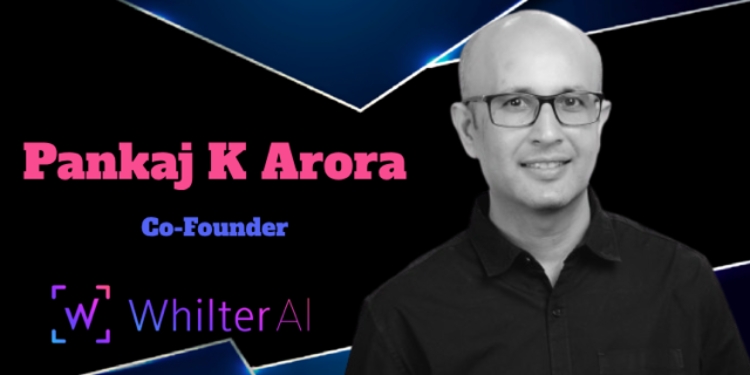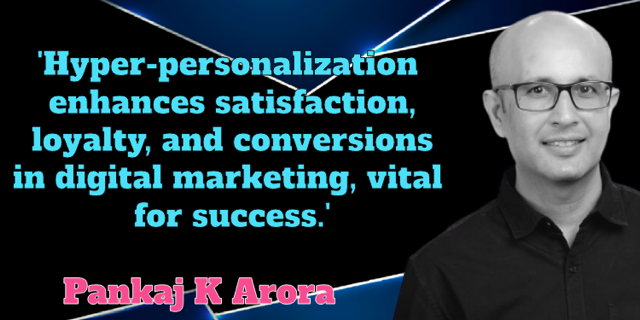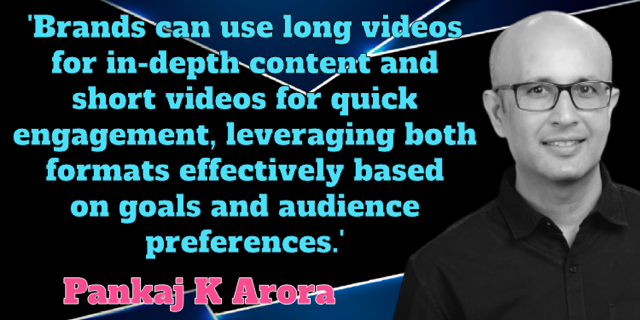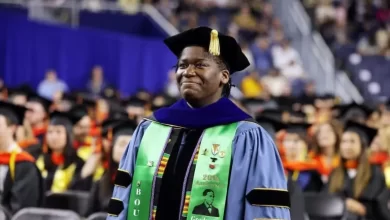GenAI is the current disruption; the next could be AI robotics or Web3: Pankaj K Arora

Founded in 2023, Whilter.AI is a Gurgaon-based CreaTech (Creativity + Technology) company that’s transforming the way brands interact with their customers. Whilter.ai is creating a space to elevate B2C communication by transforming text-based interactions into personalized, engaging videos.
Whilter.ai is led by co-founders Pankaj K Arora, a seasoned business leader with over 20 years of experience, and Prashant Yadav, a creative professional with a background in filmmaking and production. Their combined expertise positions Whilter.ai for continued success as they revolutionize B2C communication through the power of hyper-personalized video.
Medianews4u.com caught up with Pankaj K Arora, Co-Founder, Whilter.ai
Whilter.ai looks to tackle a major hurdle for brands: creating targeted video content that’s both personalised and scalable. Could you shed light on this?
Brands couldn’t upgrade their communication from personalised text to personalised videos because it is time-consuming to create videos, it takes intelligence to customise a video to each profile and it couldn’t yet scale to millions of videos. Whilter’s unique AI tech learns from customer profiles, environmental context, and journey stages to render a video in near real-time. Since it is intelligently automated, Whilter’s AI can scale your video production to generate millions of hyper-personalised and highly engaging videos that brands can use to inform, educate, entertain, retain, or upsell to all of their consumers like never before.
What progress has it made since launch in terms of client roster growth, and revenue?
Since its launch, Whilter.ai has experienced impressive growth in both its client roster and revenue. Within just seven months, the company has onboarded over 10 new paying customers across various industries, including E-commerce/D2C, Healthcare, BFSI, Fintech, Airlines, Travel & Hospitality, Experiences, Sports & Champions, Real Estate, and Automobile. Additionally, Whilter.ai has generated approximately one million hyper-personalized videos to date, showcasing its rapid expansion and market penetration.
Now that text-based interactions can be transformed into personalised, engaging videos will this have huge implications for the Indian and global movie and television industry as well as brands who advertise?
Definitely, the scale can bring huge implications. Some brands and movies always did it in some capacity. You have different ads for different regions, dubbing in movies for different regions, and even censored cuts for different age ranges of movie watchers. However, it was never scalable or affordable, so only a few could do it, and that too in a limited capacity. Whilter can enable production houses to customise a cut for every viewer, so everyone streaming a movie can watch something customised to them, individually. Advertisers can show hyper-personalised product recommendations or upsell tailor-made services to every individual.
GenAI is evolving very fast. Do brands need to focus on upskilling employees on AI to get a competitive advantage?
All of the technology is moving very rapidly, and skills which we train for the future are going to be a challenge for everyone. Not just employees but even young students, entrepreneurs, and proprietors alike. Continually upgrading our own product and offering, we’ve learnt it is important to keep unlearning and relearning. GenAI is the current disruption, the next disruption could be AI robotics or Web3. It is imperative to build a culture where we continually unlearn old practices and stay ahead of the curve, challenging our present processes and improving wherever possible.
How much research and development went into the company’s Gen-AI-powered Smart Video technology? How is it being improved upon?
Developing any technology takes investments and RnD, it takes a lot of direction from the leadership as well. With any AI technology, the efforts get compounded by the huge amounts of training data that the development requires. This product is the result of tireless nights and exhaustive weeks of the persistent Whilter AI team. We have developed a culture of staying ahead of the curve, keeping up with the latest developments in the industry, and ensuring our customer’s experience is the best in the market.
How important is hyper-personalisation when it comes to content creation in the digital world?
By tailoring content to individual preferences, behaviours, and interests, brands can create more meaningful and engaging experiences for their audience. Hyper-personalization can make the communication feel like a value addition rather than annoying spam. It not only enhances customer satisfaction but also increases brand loyalty and drives conversion rates, making it a crucial strategy for success in the competitive digital landscape.

Are long-form and short videos both equally important for brands?
Yes, Long-form videos allow brands to convey detailed information, tell compelling stories, and engage with audiences on a deeper level. On the other hand, short videos are perfect for capturing attention quickly, delivering concise messages, and catering to audiences with shorter attention spans. To maximise impact, brands should leverage both formats strategically, depending on their objectives and target audience preferences.
In a cluttered digital video environment what things must a brand keep in mind to have its video stand out?
In a cluttered digital video environment, brands must focus on several key factors to ensure their videos stand out. These include:
Compelling Storytelling: Captivating narratives that resonate with the audience.
Visual Appeal: High-quality production values and visually striking content.
Relevance: Content tailored to the target audience’s interests and preferences.
Interactivity: Incorporating interactive elements to engage viewers.
Optimisation: Ensuring videos are optimised for various platforms and devices.
Consistency: Maintaining brand identity and messaging across all videos.
By prioritising these elements, brands can create standout videos that cut through the noise and capture audience attention effectively.
Today actors deliver messages in multiple languages. We saw it in the IPL to an extent with commentary. What impact will this game changer have in areas like celebrity endorsement, and influencer marketing?
Traditionally, brands were limited by language barriers when choosing celebrities or influencers for global campaigns. Multilingual capabilities allow brands to reach a diverse audience and connect with them on a more personal level. Imagine a brand partnering with a popular celebrity in India to promote their product. By using Whilter.ai’s technology, the celebrity’s message can be translated and adapted for different regions, all while preserving the celebrity’s personality and tone. This approach can significantly increase a campaign’s reach and effectiveness. For influencers, multilingual capabilities can open doors to new markets and brand partnerships. They can now create content that resonates with a global audience, increasing their value to brands.

Companies like Meta are doing a lot of work with Large Language Models for things like virtual assistants. Your views?
It is the natural next step. Users majorly communicate with technology using buttons or texts. But that’s not efficient, it is much more natural to have a conversational relationship with tech like we do with our office teams. We’re naturally inclined to communicate conversationally rather than objectively. Meta, Google, Open AI, and Amazon are all working to give this conversational ease when we communicate with the next generation of Virtual assistants and LLM looks like the current solution.
Finally do there need to be safeguards when it comes to AI tools being created like voice cloning to prevent fraud?
Every new disruptive technology can be exploited for malicious purposes. Be it the internet, IoT or Digital Payments; all disruptive technologies inherently need safeguards against their ill-intended uses. We need safeguard policies and technologies to advance at the same rate. Even when technology accelerates, the policies by institutions and governments sometimes need to catch up, before giving the bad social elements a chance to capitalise on this.



